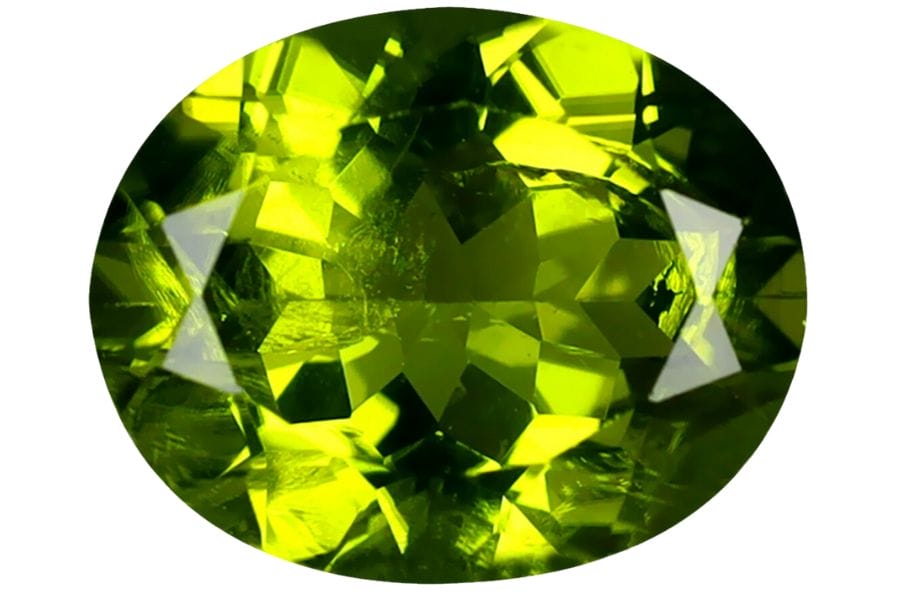As a geology and gemology expert, I’ve spent years studying and identifying various gemstones, including the beautiful peridot.
Peridot, with its unique olive-green hue, is a favorite among gem lovers but is also frequently mimicked. I’ve learned that knowing how to identify peridot is key for those interested in gems, whether for collecting, buying, or even selling.
I’ll share the differences between real and fake peridot, as well as explore how to examine a peridot’s appearance, test its hardness, and use other methods to verify its authenticity.
Understanding Natural Peridot And Why Fakes Are Common
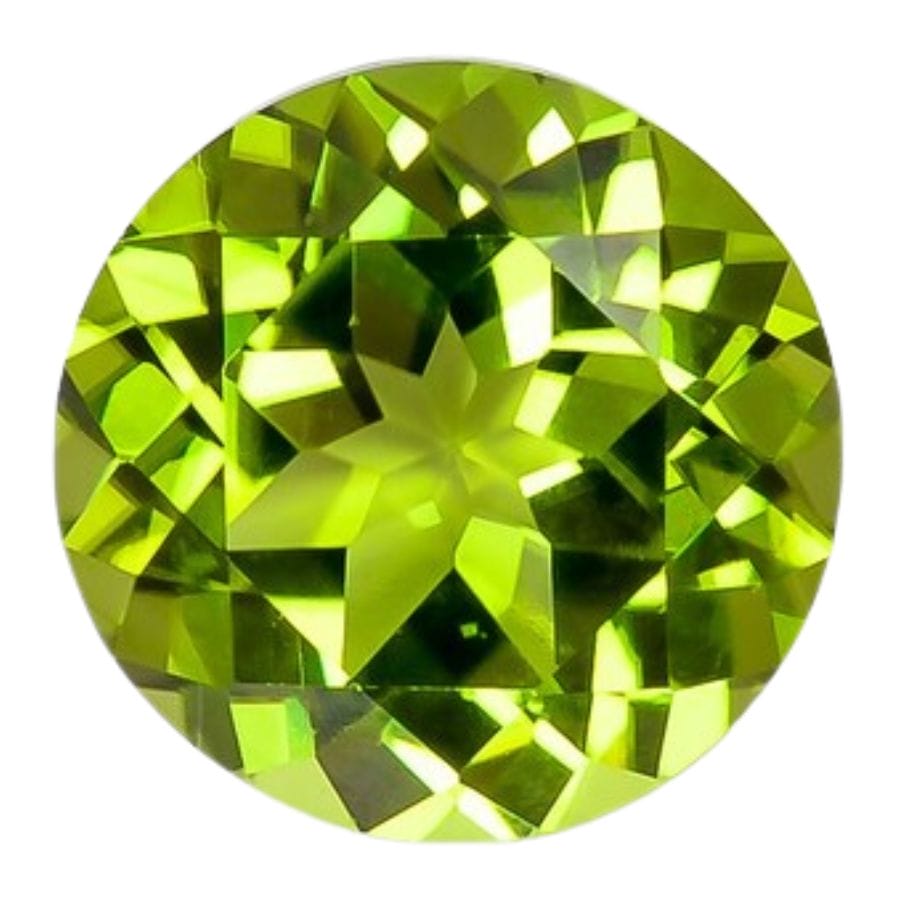
Peridot forms deep inside the Earth, in the upper mantle layer, and reaches the surface through volcanic activity. It’s also found in meteorites that come from space.
This gemstone is known for its unique olive-green color, which comes from iron. The intensity of the green depends on how much iron is in the stone.
Peridot is one of the few gems that comes in only one color, although shades can vary from yellow-green to dark green.
This gemstone is quite special because it shows double refraction. This means when you look through a peridot, you can see two of each pavilion facet, a unique feature not found in many gems.
Peridot’s hardness is around 6.5 to 7 on the Mohs scale, which makes it durable enough for jewelry but still requires careful handling to avoid scratches.
Peridot is popular in jewelry like rings, necklaces, and earrings. Its rarity, especially in larger sizes, adds to its value and appeal.
Why you’re seeing more fake peridot these days
More fake peridot stones are appearing on the market for a few reasons. First, authentic peridot is getting more popular, but it’s not easy to find in large sizes or great quality.
So, people create fake peridot to sell at lower prices. Advances in technology also make it easier to produce fake stones that look a lot like genuine peridot. These fakes can sometimes trick even experienced buyers.
Also, more people are shopping online, where it’s harder to check the quality of a gemstone before buying it. This makes it easier for sellers to pass off fake peridot as real.
How To Identify Real Peridot
Knowing how to tell if a peridot is real can ensure that you can distinguish the real thing from the fakes. Fortunately, there are practical methods that can help you identify genuine peridot.
These methods are simple yet effective, and they provide a reliable way to identify rocks and ensure the authenticity of a gem.
Color
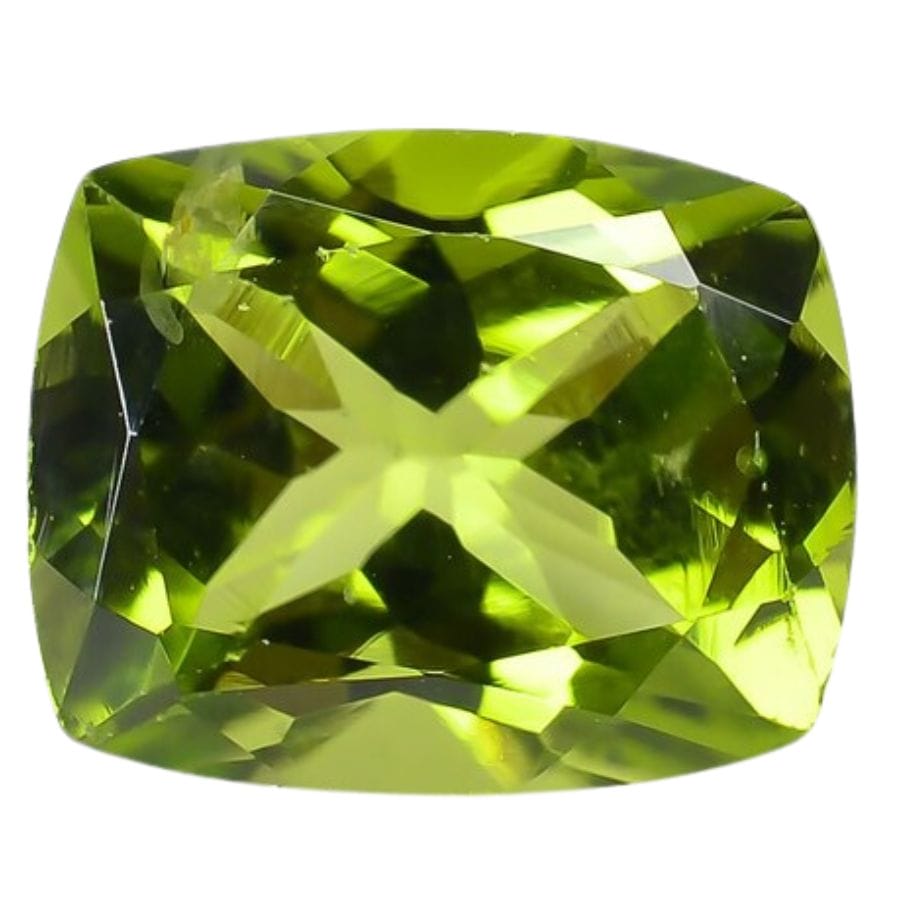
To tell if a peridot is real, pay close attention to its color. Genuine peridot shows a consistent olive green, which can range from yellowish-green to dark, leafy green. This color should be even throughout the stone.
Fakes often have a brighter, more artificial green. They might also show uneven coloring or look too perfect. Some fakes change color under different lights, while authentic peridot keeps its olive green shade.
Double Refraction
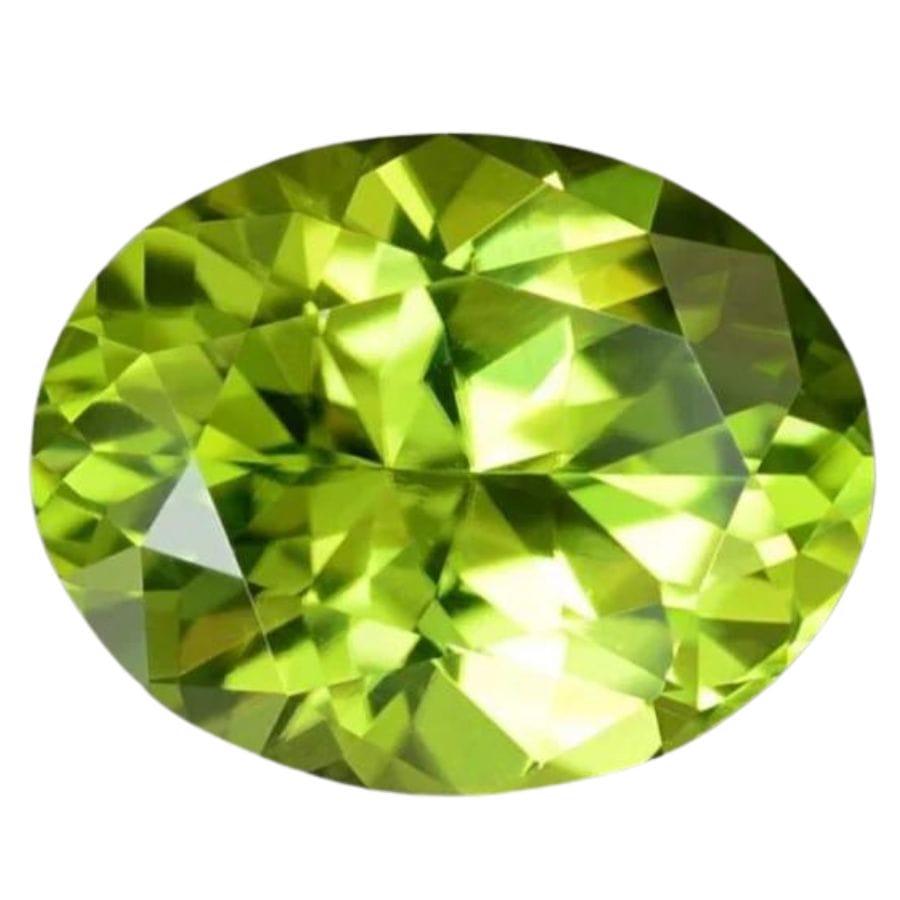
Double refraction is a key feature in identifying authentic peridot. When you look through the stone, especially using a magnifier, you should be able to see two images of objects behind it. This effect is due to peridot’s unique crystal structure.
Fake peridot, made of glass or other materials, doesn’t show this effect. Simply observe the stone under magnification. If there’s no double image, it’s likely not genuine peridot.
Inclusions
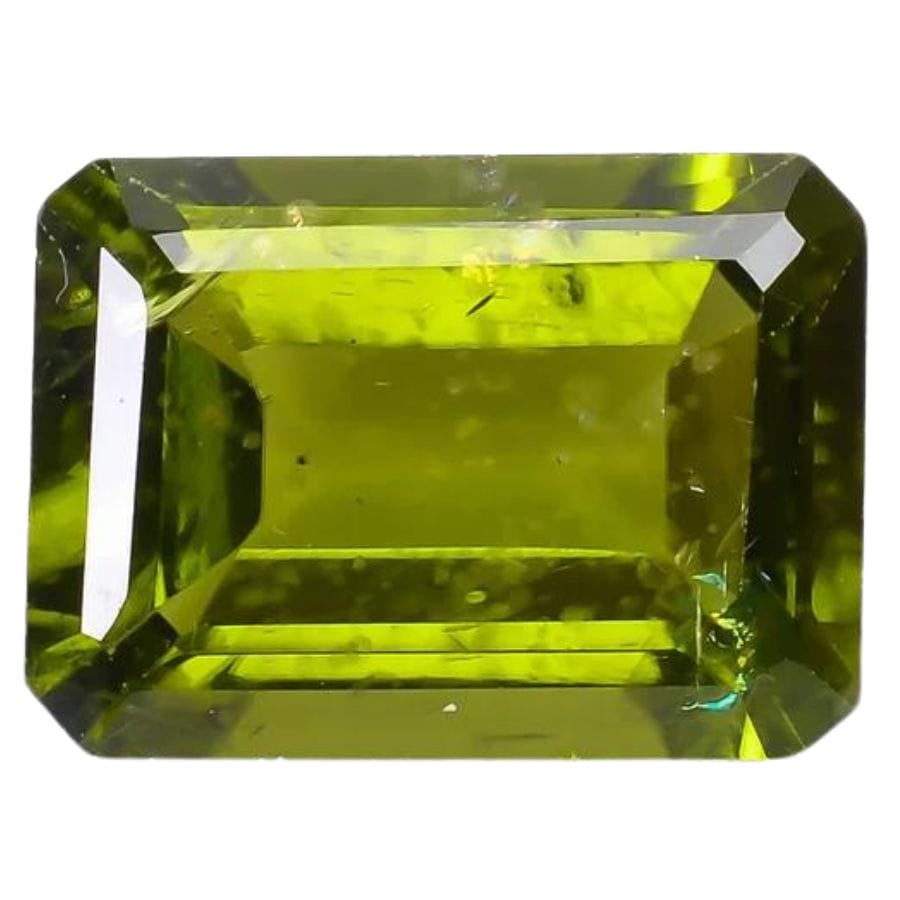
Genuine peridot often has small, natural inclusions visible inside the stone. These can look like tiny cracks, flecks, or cloud-like formations. They’re a sign of the gemstone’s natural formation process.
Fake peridots, especially those that are lab-created or made of glass, usually lack these inclusions. They often appear too clear or flawless.
Hardness Test
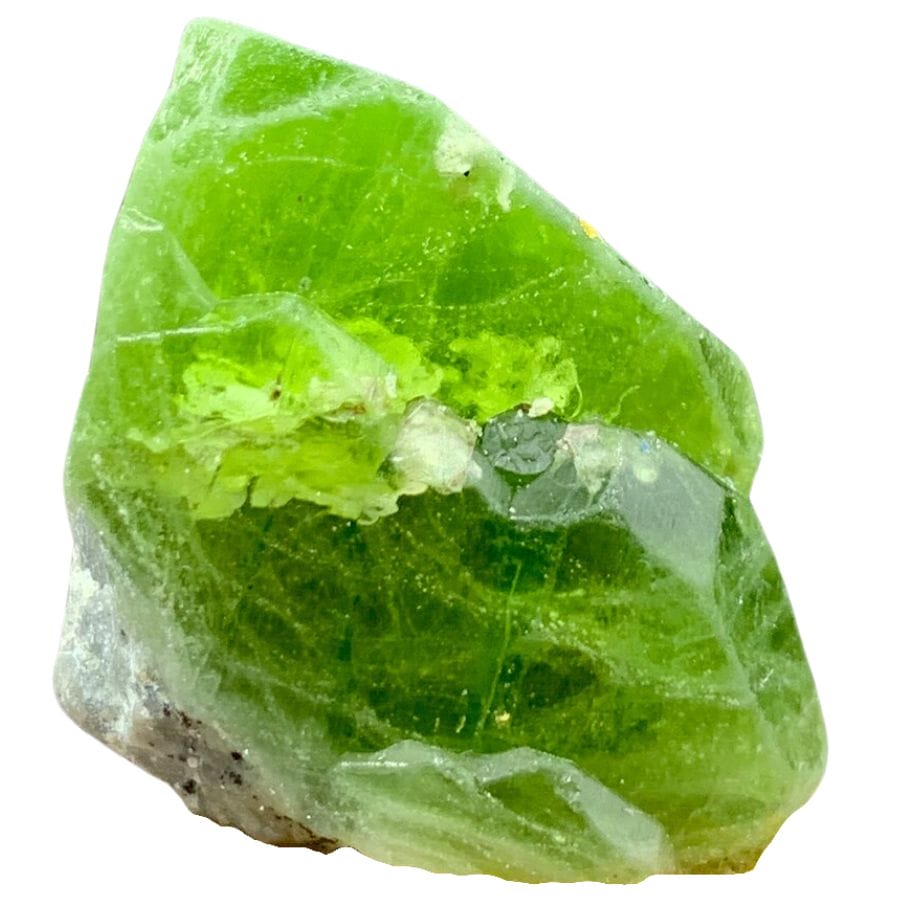
Natural peridot falls around 6.5 to 7 on the Mohs hardness scale. This means it’s hard enough to scratch glass, but it won’t scratch as easily as harder gems like diamonds or sapphires.
To test, gently try to scratch a piece of glass with the stone. If it leaves a mark, it’s likely genuine peridot. Be careful though, as this test can damage the stone or the glass.
Fake peridot might not be able to scratch glass. This simple test can be quite effective in determining the authenticity of peridot.
Magnetism Test
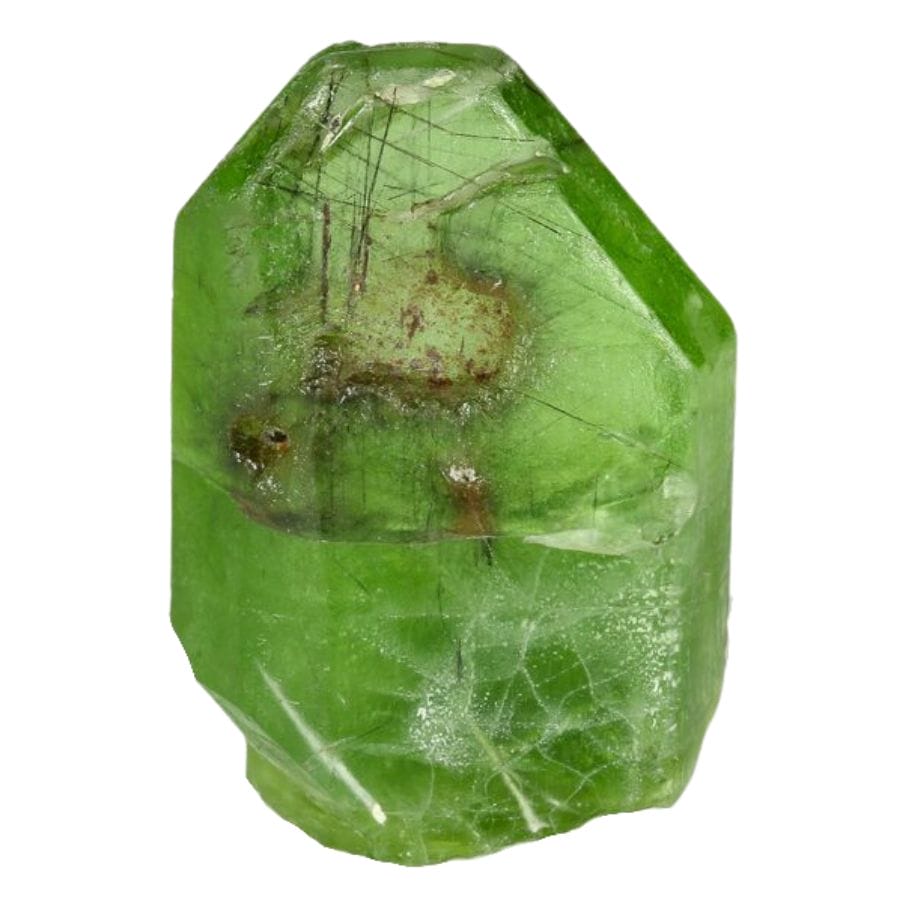
Magnetism can be a helpful tool in identifying genuine peridot. Because peridot contains iron, it may show a slight attraction to a magnet. This doesn’t mean the peridot will strongly stick to the magnet, but there might be a subtle pull.
To test this, bring a magnet close to the peridot and observe any reaction. Most fake peridots, made from materials like glass or other minerals, won’t show any magnetic attraction.
However, keep in mind that the reaction can be weak, so a very sensitive magnet is needed for this test.
The Different Types Of Fake Peridot And What They Look Like
There are several materials used to mimic peridot, ranging from colored glass to other kinds of green gems. Each type of fake has its unique properties, which can sometimes fool even the experienced eye.
Glass Peridot
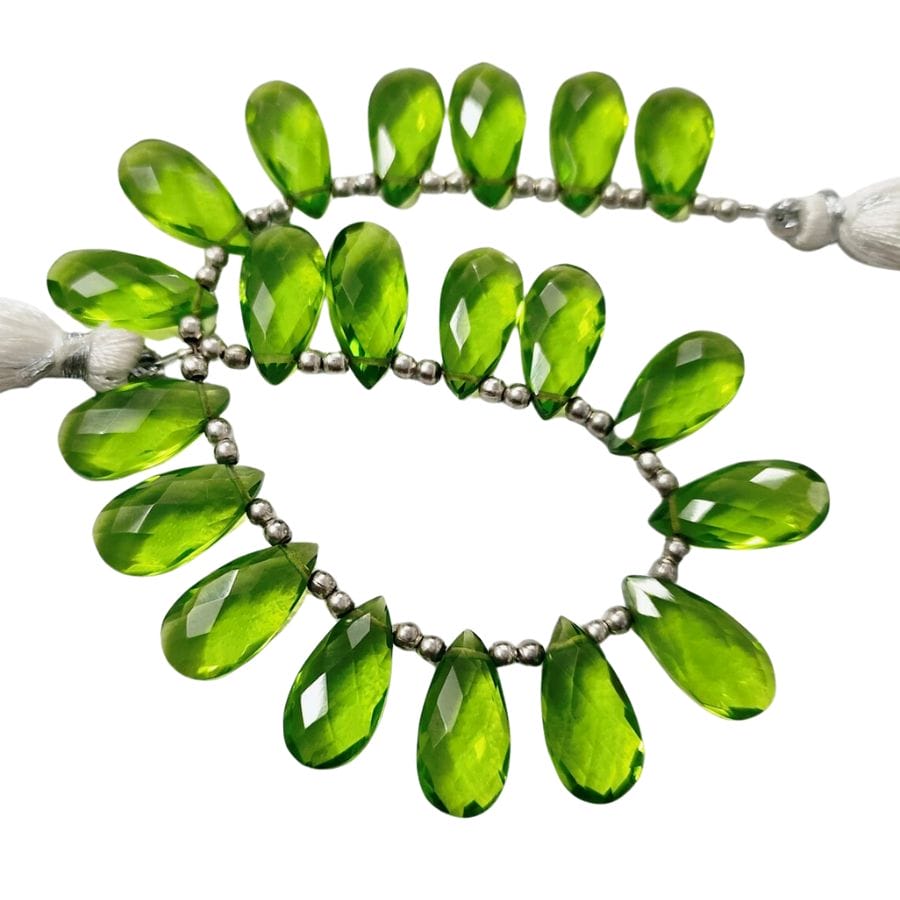
Glass peridot is made by melting special types of glass and adding green coloring to mimic the look of genuine peridot. This process involves careful control of temperature and the mixture of materials to get the right shade of green.
The glass is then cooled and cut into shapes that resemble actual peridot gemstones. Because glass can be easily shaped and polished, it’s possible to create glass peridot in various sizes and forms.
However, glass peridot lacks the natural inclusions and specific properties of the real gemstone, like its hardness and double refraction.
Despite these differences, glass peridot can look quite convincing, especially to those who aren’t familiar with the unique characteristics of authentic peridot.
How you can identify glass peridot being sold as real peridot
Double Refraction
Glass doesn’t have double refraction. Use a magnifying glass to see if images appear doubled through the stone. If they don’t, the stone is likely glass and not peridot.
Test the Hardness
Genuine peridot can scratch glass because it’s harder. Try gently scratching a piece of glass with the stone. If it doesn’t leave a scratch, it might be glass.
Look at the Color
Glass peridot usually has a more uniform and brighter color than genuine peridot. Genuine peridot has a more subtle, olive green color.
Synthetic Peridot
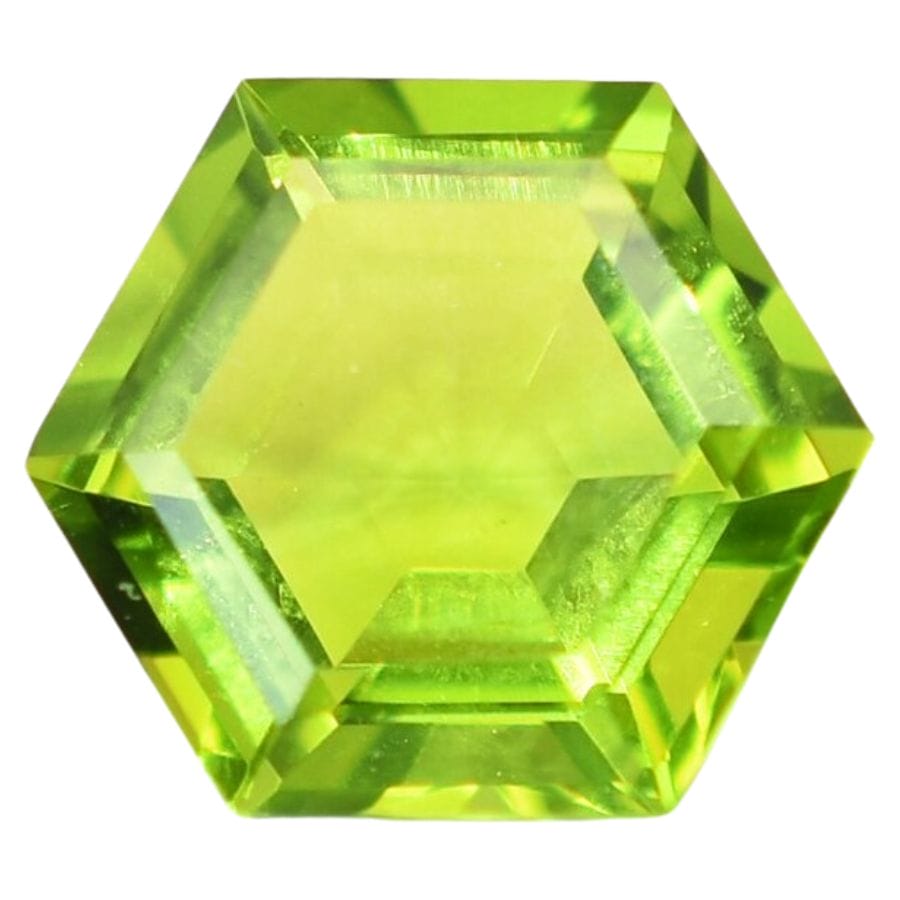
Synthetic or lab-created peridot is made using advanced scientific methods. These methods mimic the natural conditions under which authentic peridot forms in the Earth.
In the lab, chemicals that are the same as those in natural peridot are used. These chemicals are heated to very high temperatures and then cooled slowly. This process allows crystals to form just like they do deep in the Earth.
The big difference is that it happens much faster in the lab.
The crystals are then cut and polished to look like authentic peridot stones. Lab-created peridot has the same chemical and physical properties as genuine peridot, including color and hardness.
However, lab-created peridot doesn’t have the unique natural inclusions or the slight variations in color that genuine peridot has.
How you can identify synthetic peridot being sold as real peridot
Look for Flawlessness
Synthetic or lab-created peridot often looks too perfect. Genuine peridot usually has some small natural flaws or inclusions. If the stone looks flawless, it might be synthetic.
Uniform Color
Authentic peridot can have slight variations in color. Synthetic peridot tends to have a very even and consistent color throughout. If the color looks too uniform, it’s a sign it might be lab-created.
Check Under Magnification
Using a magnifying glass, look for signs of natural inclusions. Synthetic peridot will not have the same types of inclusions found in natural stones. It may have bubbles or other signs it was grown in a lab.
Diopside
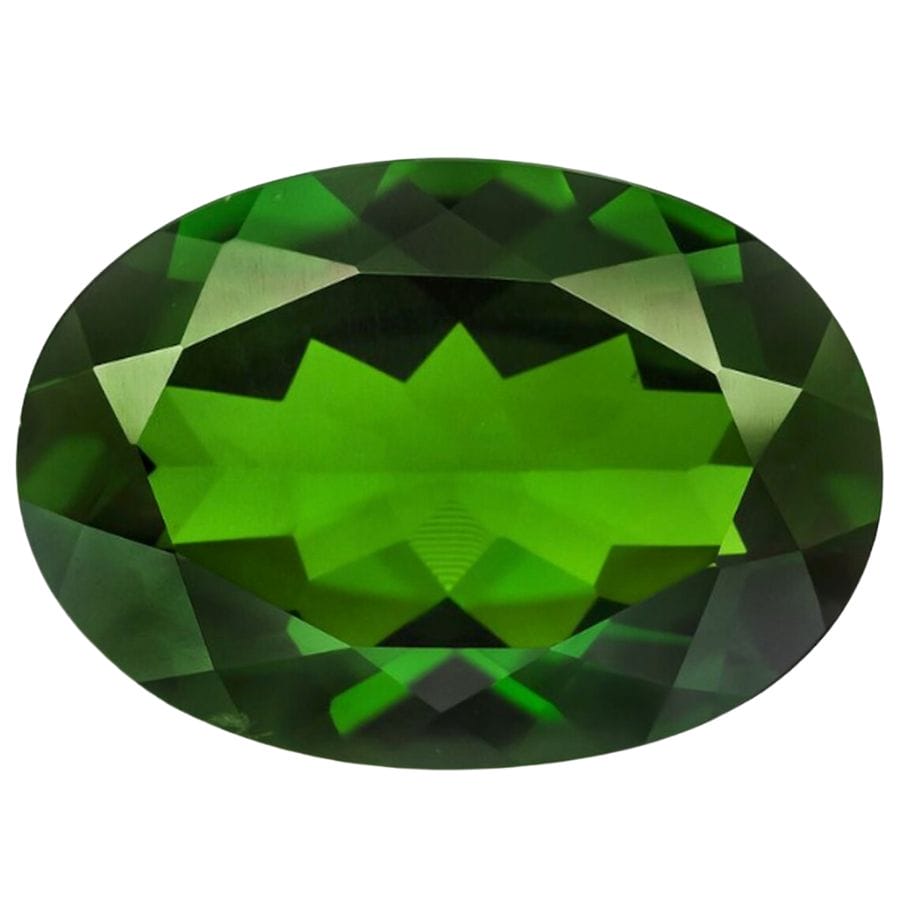
Diopside is a type of mineral that forms in several places, like in igneous rocks that come from volcanoes and in metamorphic rocks that have been changed by heat and pressure.
It’s usually found in shades of green, which is why it can be used to imitate peridot.
To make diopside look like peridot, it’s cut and polished in a way that brings out its green color and makes it shiny.
While diopside can have a similar color to peridot, it’s not the same. Diopside is usually a darker green and doesn’t have the same kind of brightness or olive tone that peridot has. Also, diopside is softer than peridot, which means it can get scratched more easily.
And unlike peridot, diopside doesn’t have double refraction, so you won’t see two of everything when you look through it.
How you can identify diopside being sold as real peridot
Color Check
Diopside is typically a darker green than peridot. If the stone is a very dark green, it might be diopside, not peridot.
Hardness Test
Diopside is softer than peridot. Try scratching the stone with a common metal like a steel nail. If it leaves a visible mark, it’s probably diopside.
Double Refraction
Peridot shows double refraction, where you see two of everything through the stone. Diopside doesn’t do this. Look through the stone with a magnifying glass. No double image means it might be diopside.
Green Tourmaline
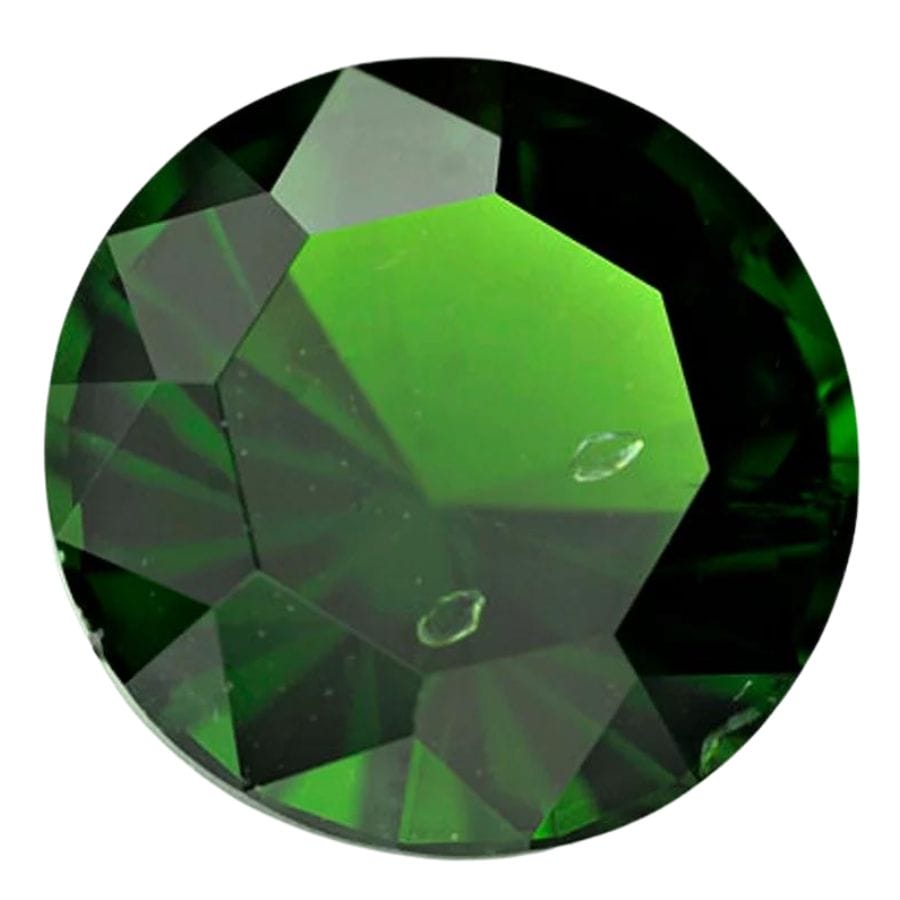
Green tourmaline is a naturally occurring gemstone. This gemstone forms in the Earth under very high pressure and temperature conditions. It comes in many colors, but the green variety is the one that looks like peridot.
Green tourmaline can have a similar color to peridot, but it’s usually darker and can range from a light green to a very dark, almost black green.
In jewelry, green tourmaline is cut and polished in ways that enhance its color and make it look more like peridot.
It’s important to note that green tourmaline and peridot have different physical and chemical properties. For example, tourmaline doesn’t show the double refraction that is characteristic of peridot.
Despite these differences, however, green tourmaline can be a convincing substitute for peridot in jewelry.
How you can identify green tourmaline being sold as real peridot
Check for Pleochroism
Green tourmaline shows pleochroism, meaning it changes color when viewed from different angles. Peridot does not have this property. If the stone changes color, it’s likely tourmaline.
Look at the Crystal Shape
Green tourmaline often forms in long, slender crystals. Peridot tends to have a more rounded or blocky crystal shape. So, the overall shape of the stone can give a clue.
Color Differences
Green tourmaline usually has a darker shade than peridot. If the stone is a very dark or blackish green, it might be tourmaline, not peridot.
Green quartz
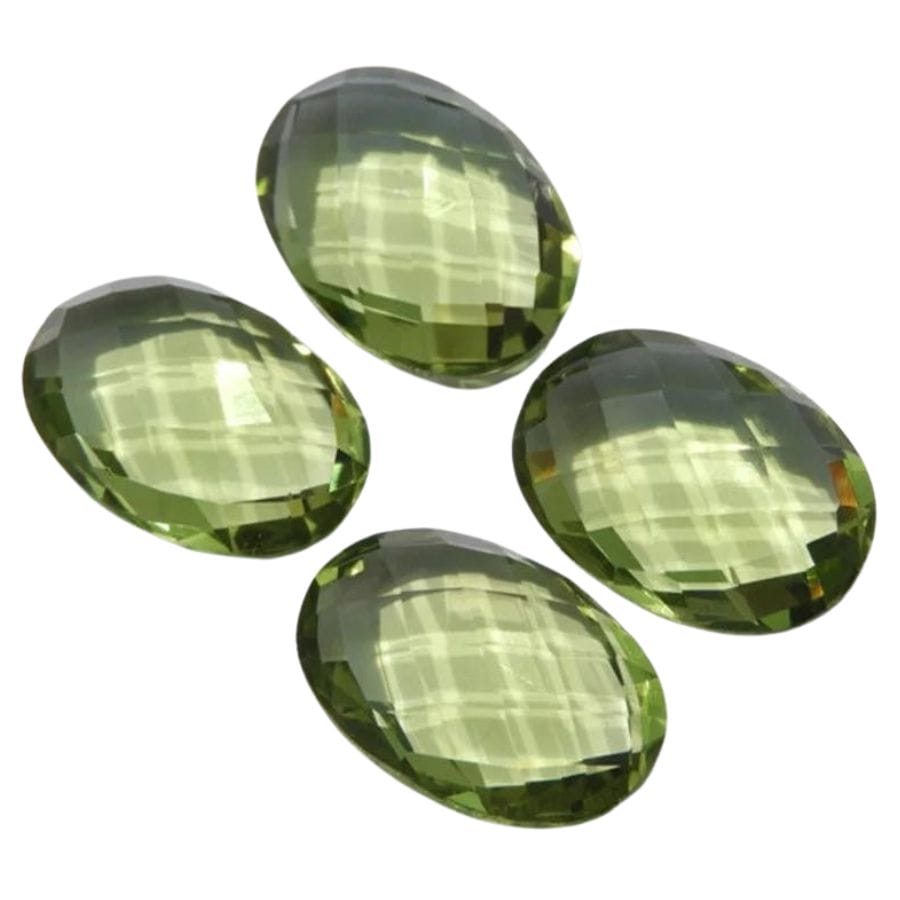
Quartz is a common mineral found all over the world. It’s clear and colorless in its pure form, but it can be made into different colors, including green to imitate peridot.
To create green quartz, manufacturers either heat treat other types of quartz like amethyst, which naturally has a purple color, or they use radiation treatments on yellowish quartz. This turns the quartz a light green color, similar to peridot.
The quartz is then cut and polished, making it look shiny and attractive, like a gemstone. It’s used in jewelry as a cheaper alternative to peridot.
However, green quartz often doesn’t have the same olive green color. It also lacks peridot’s unique features like double refraction.
How you can identify green quartz being sold as real peridot
Color Difference
Quartz that’s dyed green usually has a lighter green color. Genuine peridot has a more vibrant olive green. If the stone’s color is too pale, it might be quartz.
Examine the Crystal Shape
Peridot and quartz are often cut differently due to their crystal structures. Peridot has more of a rounded or blocky crystal shape, while quartz is often found in longer, six-sided crystals. If the stone’s shape looks more elongated, it might be quartz.
Look for Inclusions
Genuine peridot often has tiny, natural inclusions. Quartz, especially when dyed, tends to be clearer or might have different types of inclusions. Use a magnifying glass to look inside the stone for clues.
How To Tell If Peridot Is Real Vs Fake
I’ll show you the practical and simple techniques that you can use to ensure the authenticity of peridot. These methods can help differentiate actual peridot from imitations like glass, synthetic crystals, or other green gemstones.
How To Identify Fake Peridot When It’s Cut Or Polished
These are three easy ways for you to determine if a cut and polished stone is peridot, an imitation, or a different gem.
Refraction
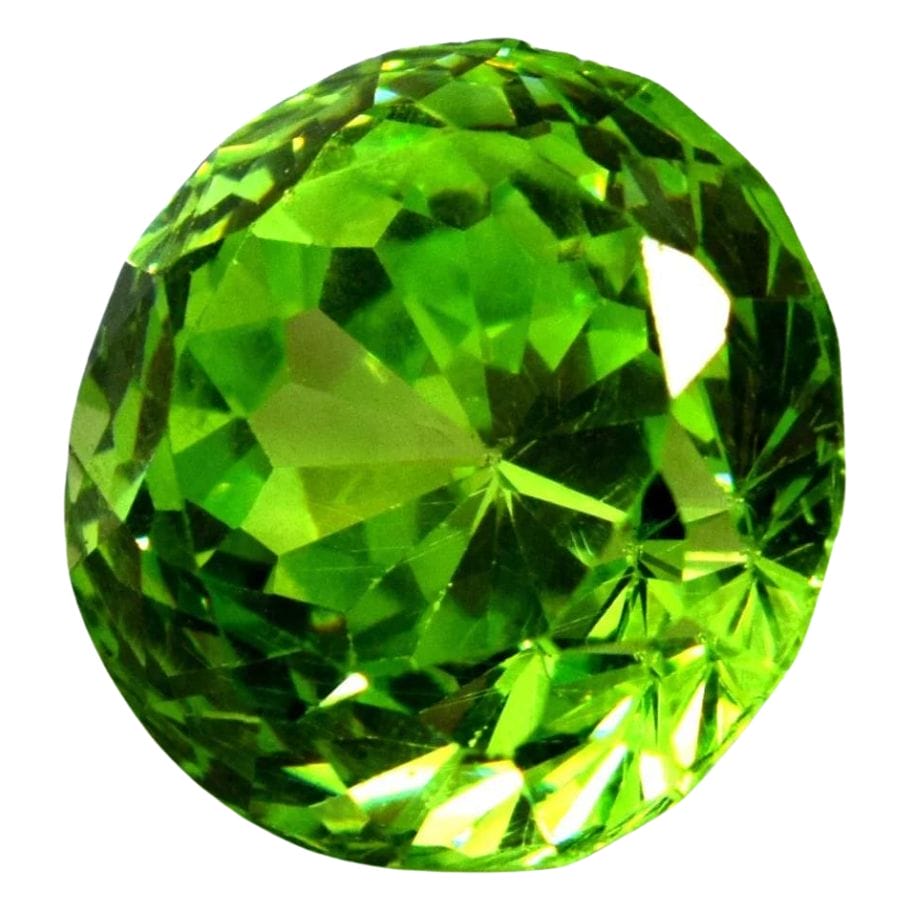
One way to identify real vs fake peridot when it’s cut and polished is by looking for double refraction.
If you don’t see this effect, the stone might be lab-made, made of glass, or it might be a different gem entirely.
Clarity
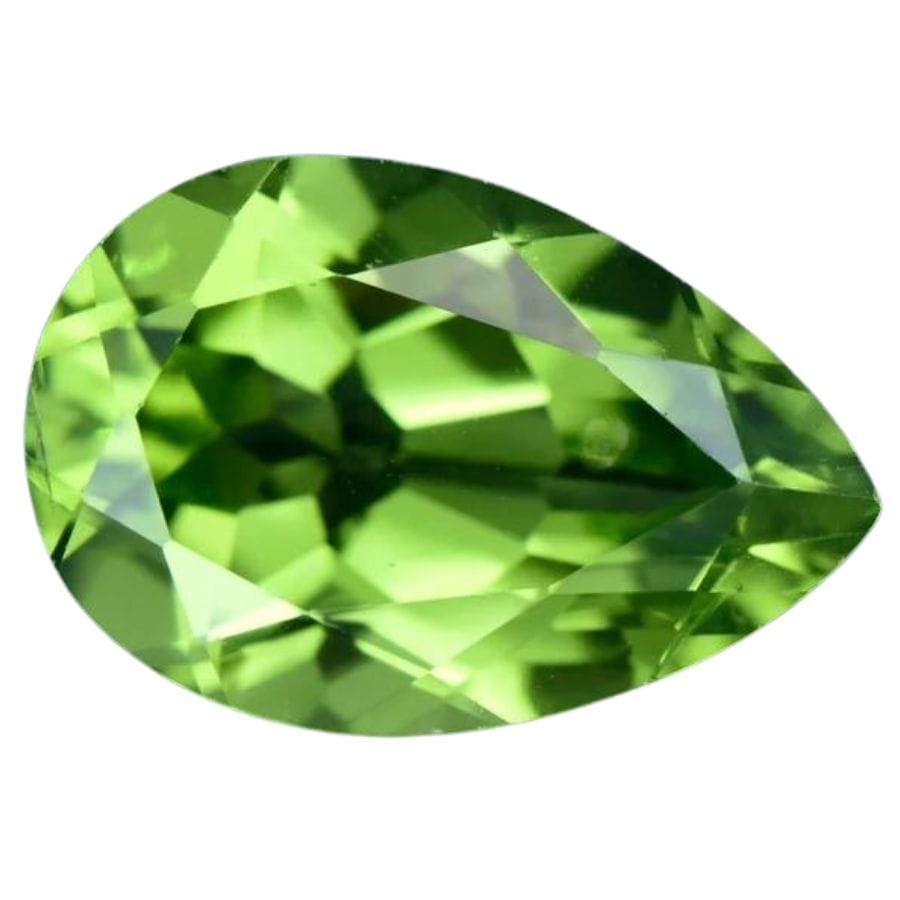
Genuine peridot often has small inclusions, which can look like little cracks, flecks, or cloud-like spots. They are natural and show that the peridot formed in the Earth.
If a peridot stone looks completely clear and doesn’t have any inclusions, it might be a sign that it’s not natural.
Large or artificial-looking inclusions could also indicate a fake stone. Things like bubbles or seams can indicate that the stone is synthetic.
Color
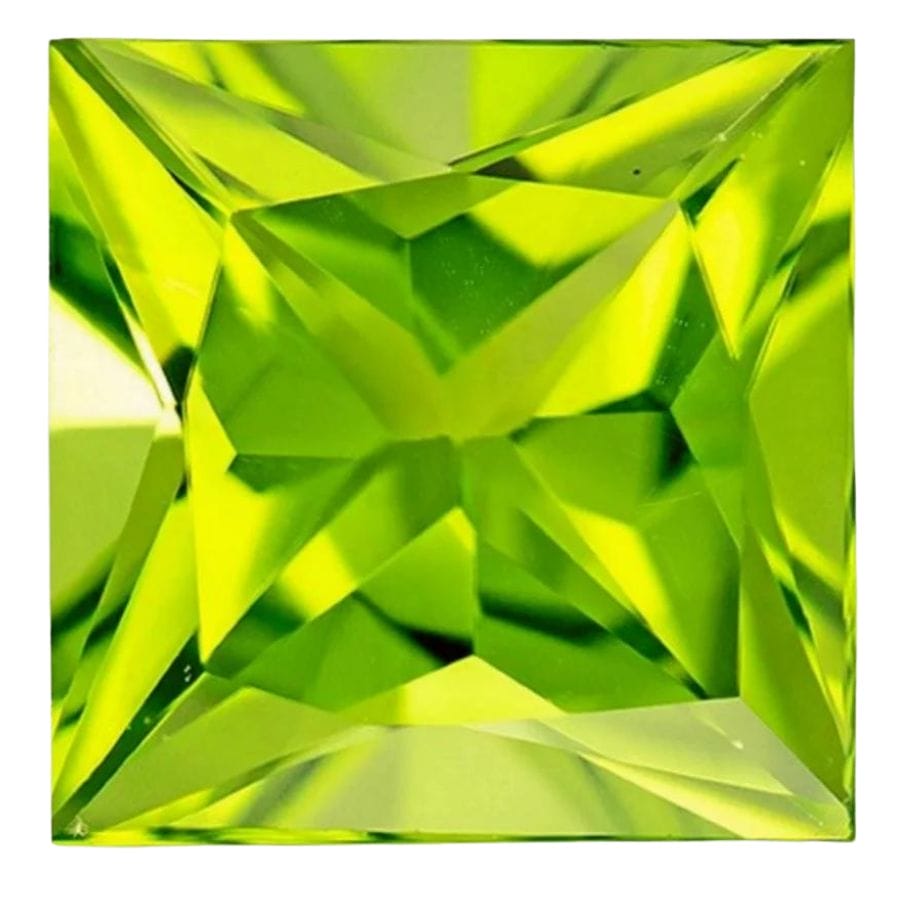
Authentic peridot has a unique olive-green color. This color can vary a bit, but it’s usually a deep and rich green. It’s not too bright or neon-like. If the stone’s color looks pale, washed out, or unnaturally bright, it’s a sign that it might be fake.
Often, these imitation peridot doesn’t get the color quite right. The stone might be too light, too dark, or just a different shade of green.
Another thing to look for is color consistency. Genuine peridot should have an even color throughout the stone. If the color looks uneven or has noticeable patches of different shades, it could be a sign of a fake stone.
How To Identify Fake Peridot When It’s Raw
These are the characteristics you should look for if you have a raw and unpolished stone and you’re not sure if it’s peridot.
Texture
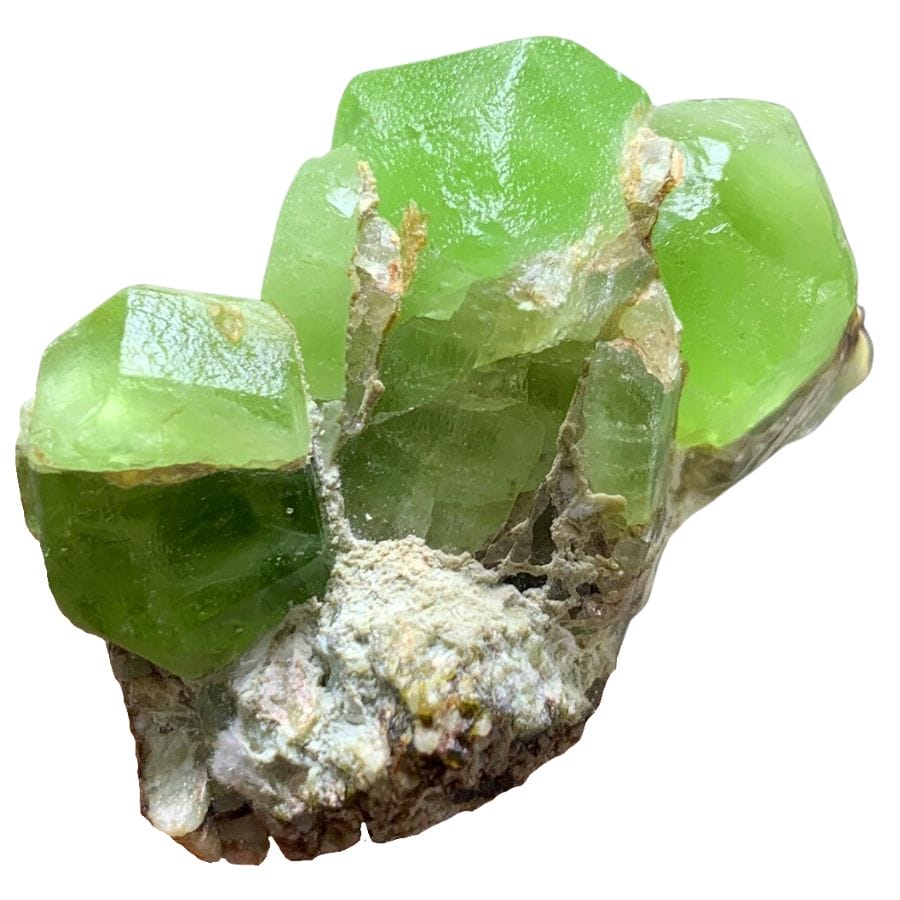
Genuine peridot, when it’s uncut, has a characteristic rough and uneven surface. This is because it forms naturally in the Earth under high pressure and temperature, leading to an irregular, often granular texture.
On the other hand, fake peridot stones, especially those made in a lab or artificially, tend to have much smoother surfaces. They lack the natural roughness and irregularities of genuine peridot.
Additionally, lab-created peridot usually comes in bricks before it’s cut and polished.
Crystal Structure
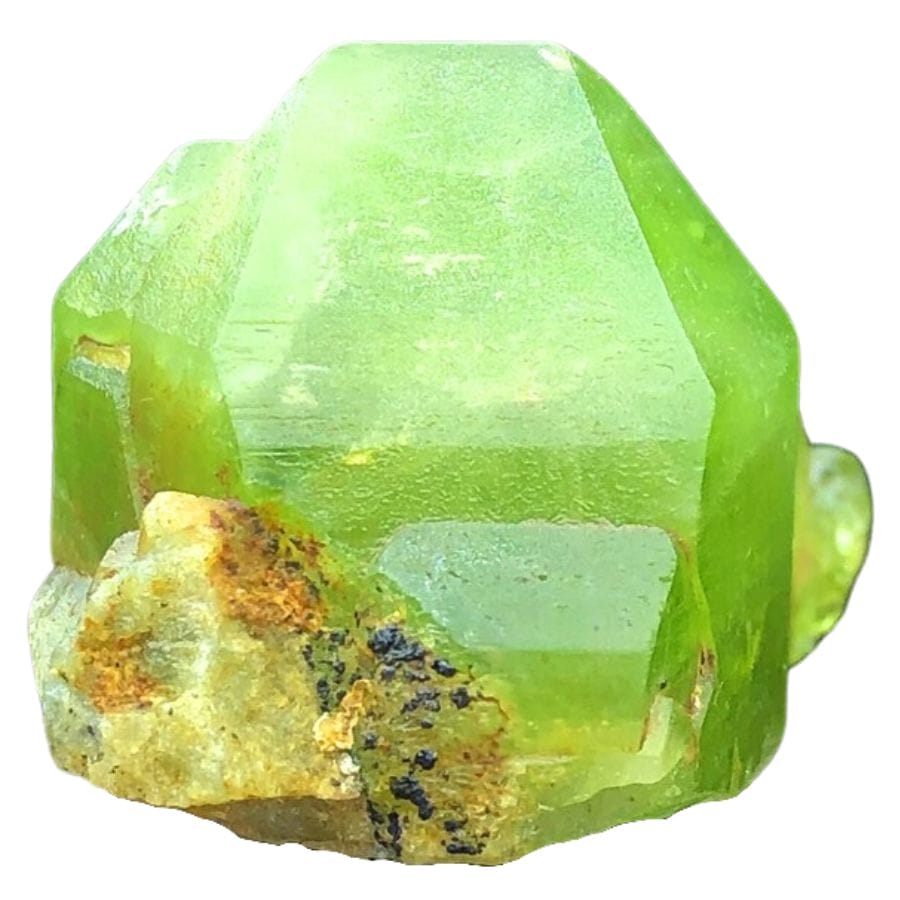
Peridot naturally forms in a distinctive, blocky crystal structure. Actual peridot crystals often appear in somewhat angular shapes. If the stone is too elongated or smooth, it’s a sign that it might not be genuine peridot.
Hardness
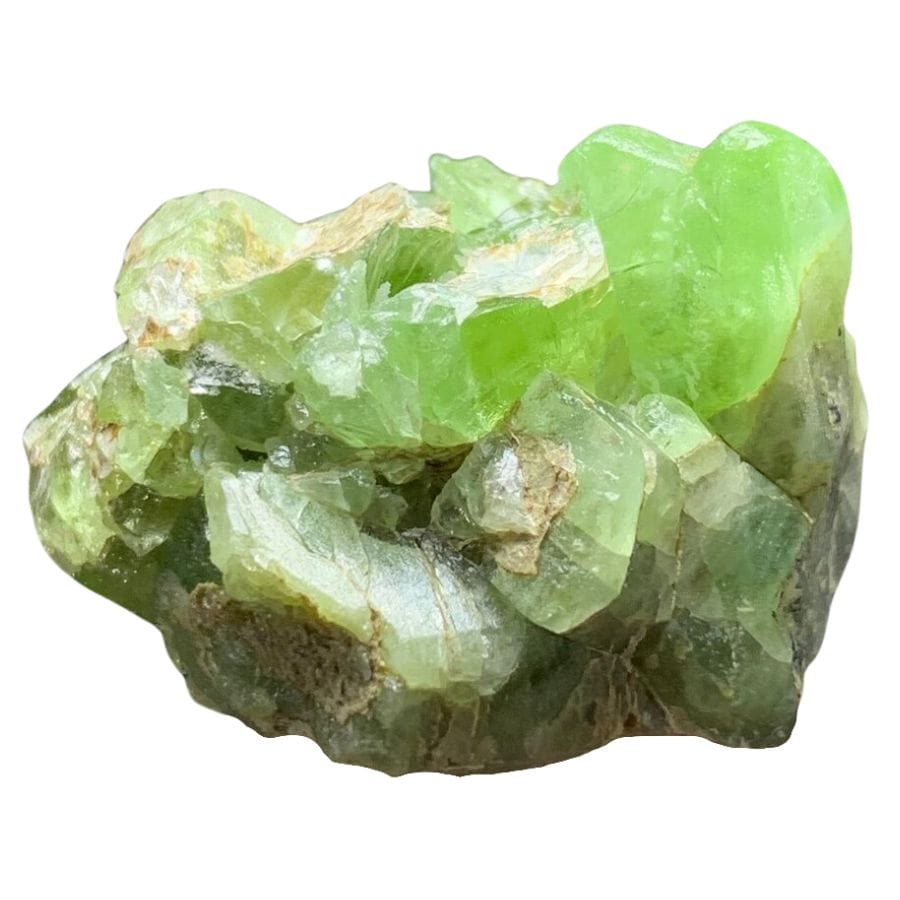
Using a hardness test is a practical way to tell if a raw, uncut stone might be peridot. To do this test, take a piece of glass.
Gently try to scratch the glass with the stone. If the stone leaves a scratch mark on the glass, then it’s a good sign that it could be genuine peridot.
It’s important to be careful when doing this test. Scratching too hard can damage the stone.
Remember that no single test can confirm if a stone is definitely peridot. It’s best to use a combination of methods for a more accurate identification.

